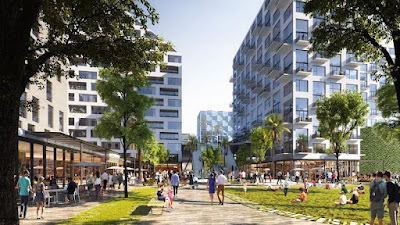Gilroy has a housing shortage and our low and middle-income households face historic rent burden. Undersupply of “Missing Middle” housing, or medium density housing near jobs and transit, is one of the key factors contributing to the displacement and rent burden of our residents. In Gilroy we have 75% of our land zoned for single family homes, 10% were small multifamily (2-4 units), and 12% were medium or large multifamily (5+ units). Our Regional Housing Needs Allocation (RHNA) are minimum mandated State standards and we should strive to reach higher than the minimum.
Thankfully millions of dollars in funding have poured into Gilroy to help our most vulnerable address their rent burden. Data from our housing element shows 21% of households are considered extremely low-income, making less than 30% of AMI. According to recent data provided by ABAG, 59.1% of Gilroy’s population in 2020 was Latinx, 28.0% was White, 9.1% was Asian, and 1.1% was African American. As we finalize the next Housing Element, we will need to examine the ways at which the 75% zoning can be the limiting factor as we work towards affordability, equity, and not continue to have communities that are segregated based on incomes and race.
SB9 allows duplexes on lots currently zoned for single family use only. If your lot is big enough you can split it, and then build up to two units on each of the lots. SB9 contains important protections against displacement of existing tenants. Duplexes contribute needed housing to the City of Gilroy’s housing stock and enhance housing opportunities. ADUs and junior ADUs are allowed on single-family, duplex and multifamily dwelling zoned properties that include a proposed or existing primary residential dwelling. Grant funding available too!
The consequences of failing to effectively and aggressively confront this crisis is hurting thousands of our residents, robbing future generations of the chance to call Gilroy home, stifling economic opportunities for workers and businesses, worsening poverty and homelessness, and undermining our environmental and climate objectives. State Housing Community Development (HCD) cautioned that jurisdictions with non-compliant Housing Elements will be ineligible for, or face delays in receiving, state funding. Jurisdictions would also be unable to use inconsistent zoning/general plan standards to deny affordable housing projects, and could be subject to additional legal ramifications and fines. HCD will review actions and inactions submitted in the Annual Progress Report by local jurisdictions and they will take action on jurisdictions that are inconsistent with their Housing Elements. HCD will respond to public complaints if a jurisdiction's actions are in violation with state law.
With the recent adoption of our City’s General Plan 2040, we as a community called for bold actions that include providing high density housing options, affordable housing for all, and continuing to promote cleaner modes of transportation. We encourage existing and proposed development to incorporate Transportation Demand Management (TDM) measures such as car-sharing, transit passes, and unbundling of parking (requiring separate purchase or lease of a parking space) where such measures will result in a reduction in vehicle miles traveled, reduction of required amount of parking or an increase in the use of alternate transportation modes.
The adoption of an Inclusionary Housing Ordinance is an important ordinance that has been overlooked, and was included as an action item in our 2007 housing element, but never implemented. Then again in 2018 according to Santa Clara County Civil Grand Jury Report “Affordable Housing: Density is Our Destiny” included a recommendation stating that “Gilroy (should) increase inclusionary housing requirements for the below market housing to at least 15% (of new dwelling units) by the end of 2019. That was never implemented.
Cities and counties subject to SB 35 streamlining provisions when proposed developments include ≥ 50% affordability. Gilroy is one of the jurisdictions that has insufficient progress toward their lower income RHNA (Very Low and Low income) and are therefore subject to the streamlined ministerial approval process (SB 35 (Chapter 366, Statutes of 2017) streamlining) for proposed developments with at least 50% affordability.
I am supportive of the staff's recommendation to City Council on October 17, 2022. Make a meaningful effort to get a draft submitted to HCD that won’t fail. We have many organizations that have provided public comment letters that stand with us getting this right the first time. Without a complete site inventory to analyze, transparency of pending projects being carried over, proof that some non-vacant sites are willing to build affordable housing; it's not a fair statement to say that rezoning is not needed yet. The final draft for approval will come before the newly elected City Council in early 2023. It’s time to Get Out The Vote (GOTV) and support candidates that are pro-housing, our future generations are counting on us.



